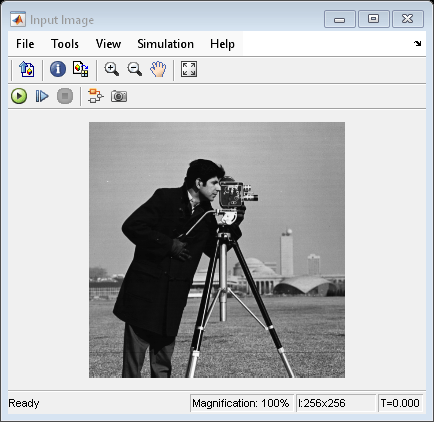2-D DCT
Compute 2-D discrete cosine transform (DCT)
Libraries:
Computer Vision Toolbox /
Transforms
Description
The 2-D DCT block calculates the two-dimensional discrete cosine transform of an image. Suppose f(x,y) is the input image of dimension M-by-N, the equation for the 2-D DCT is
where for and otherwise.
The number of rows and columns of the input image must be power of 2. You can also use this block to compute 1-D DCT of a vector.
Examples
Ports
Input
Output
Parameters
Block Characteristics
Data Types |
|
Multidimensional Signals |
|
Variable-Size Signals |
|
More About
References
[1] Chen, W.H, C.H. Smith, and S.C. Fralick, “A fast computational algorithm for the discrete cosine transform,” IEEE Trans. Communications, 25 (1977): 1004-1009.
[2] Wang, Z. “Fast algorithms for the discrete W transform and for the discrete Fourier transform,” IEEE Trans. Acoust., Speech, Signal Processing, 32 (August 1984): 803-816.
Extended Capabilities
Version History
Introduced before R2006a


